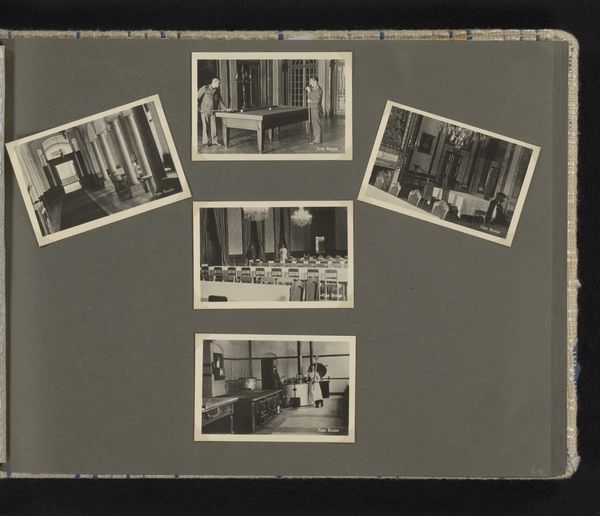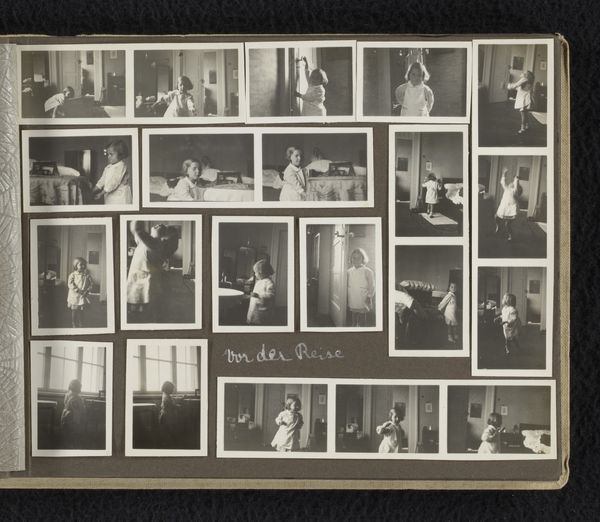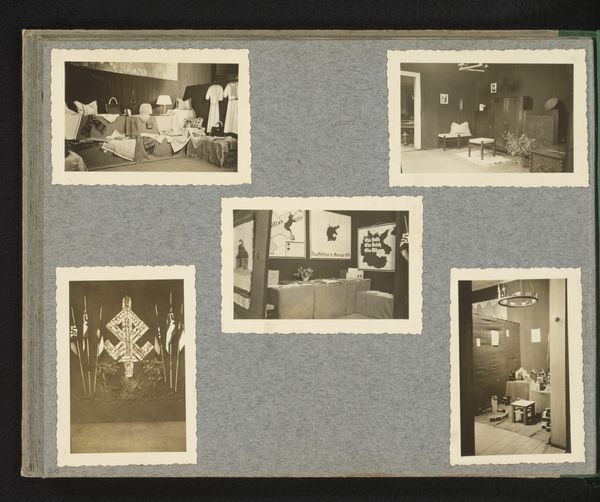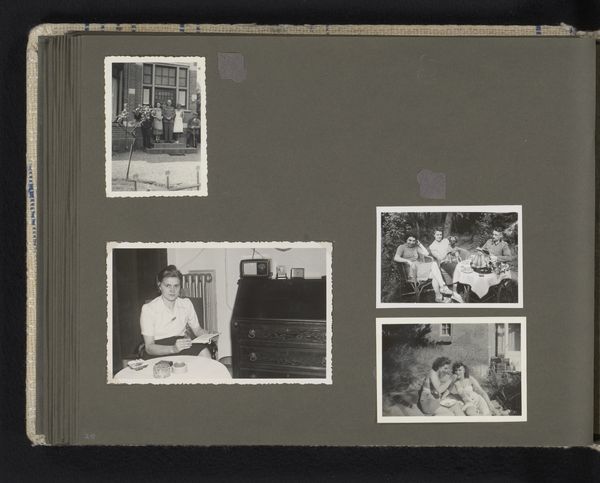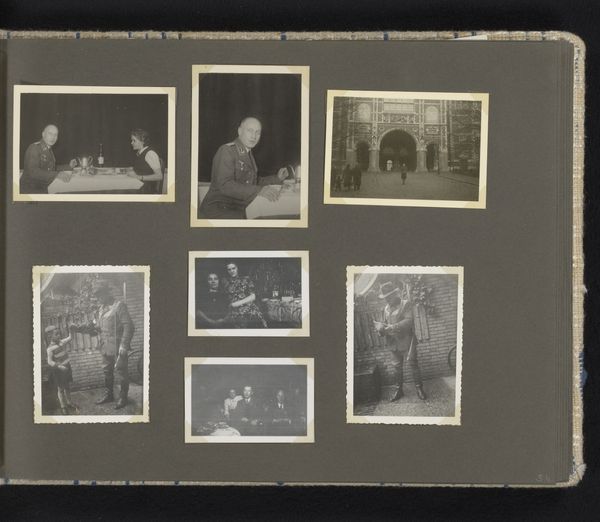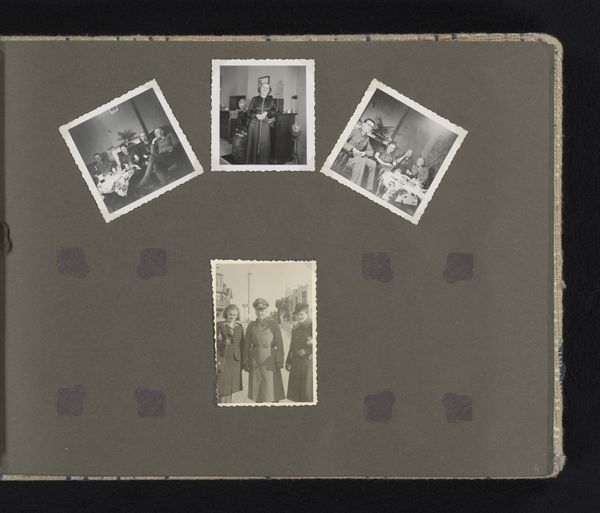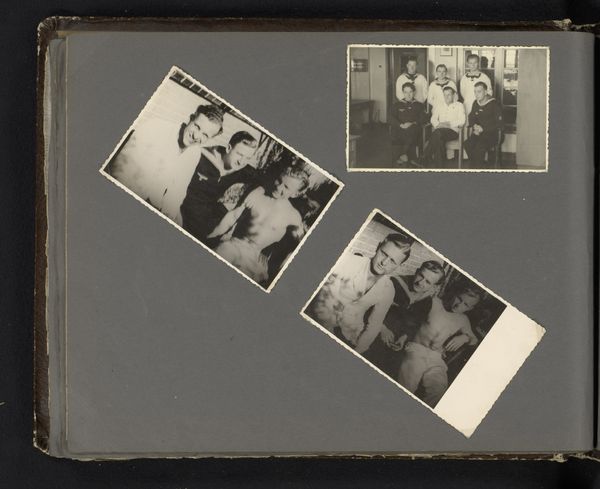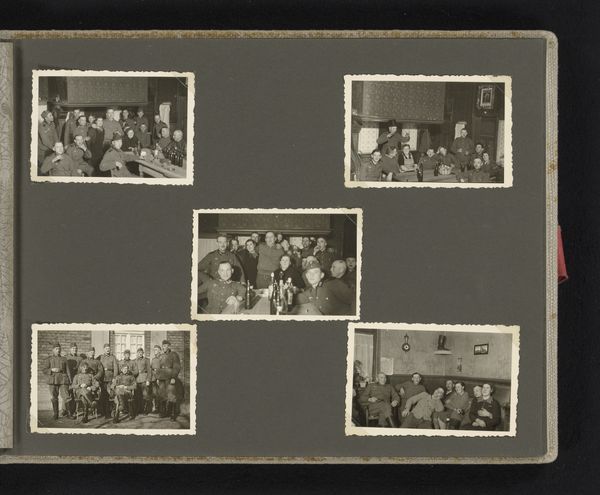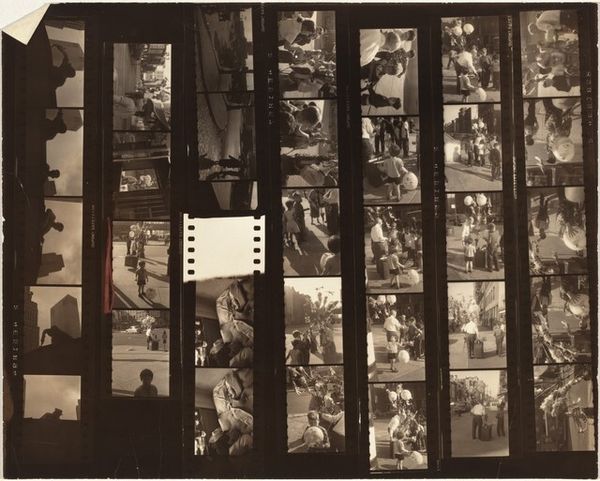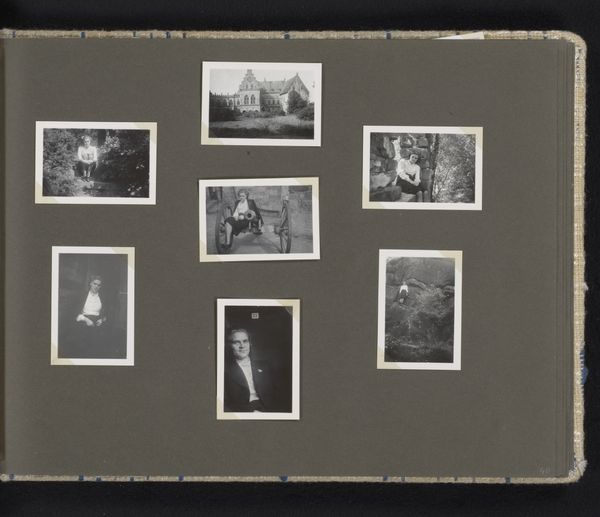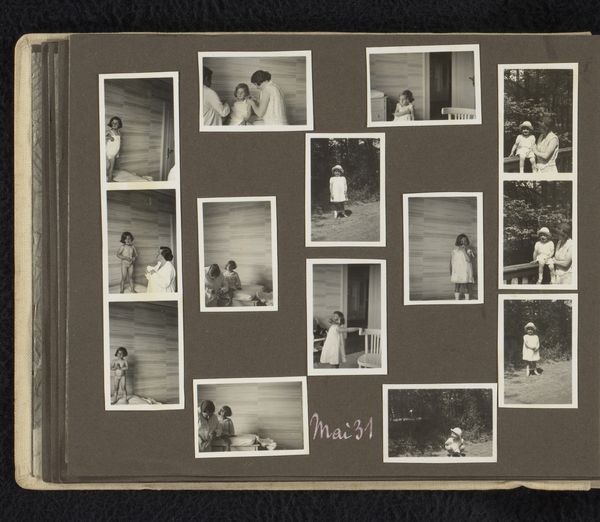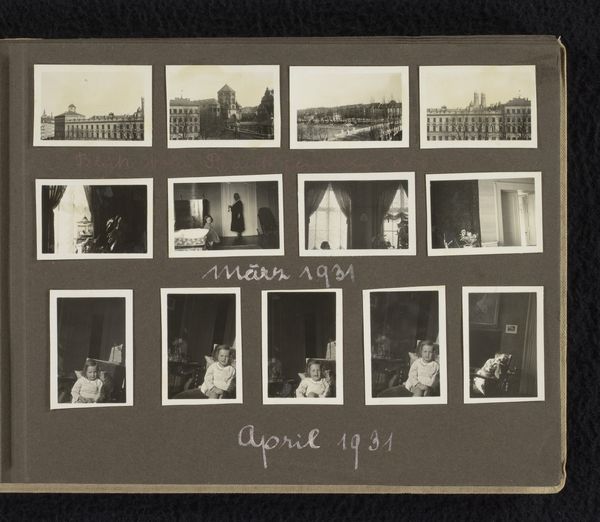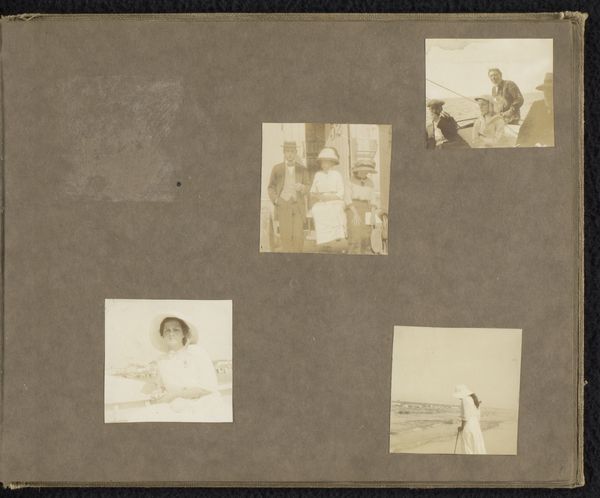
Isabel Wachenheimer in huiselijk tafereel, in huiselijk tafereel met haar ouders Eugen Wachenheimer en Else Wachenheimer-Moos, met haar kindermeisje, en op straat met haar grootvader Meir Wachenheimer, oktober 1932, Stuttgart 1932
0:00
0:00
print, photography, gelatin-silver-print
#
portrait
# print
#
photography
#
historical fashion
#
gelatin-silver-print
#
realism
Dimensions: length 325 mm, width 230 mm
Copyright: Rijks Museum: Open Domain
Editor: This is a photo album page of gelatin silver prints, assembled in 1932. The title tells us it depicts Isabel Wachenheimer in domestic scenes with her family in Stuttgart. There’s a feeling of intimacy, but also something unsettling about freezing these moments in time, knowing what was on the horizon for Jewish families in Germany. What strikes you most about it? Curator: What stands out for me is the juxtaposition of everyday life and impending doom. The mundane activities—playing, reading, family meals—are documented with care. Yet, consider the date: 1932. Just a year before the Nazi rise to power. This photo album transforms from a simple family record into a powerful artifact of pre-Holocaust Jewish life. It quietly screams of normalcy about to be shattered. Editor: So, you're seeing this album page not just as a collection of snapshots, but as a document that speaks to the broader socio-political context? Curator: Precisely. These images serve as a poignant reminder of what was lost – an entire world, rich with familial love and simple routines, extinguished by hate. Notice how the family arranged the images, carefully composing their own narrative? Even in this personal act of preservation, we see a resistance against erasure. The very act of documenting their lives becomes a form of defiance, however subtle. Do you see how the act of assembly becomes a historical document? Editor: I do. It’s heartbreaking, but also a testament to the enduring power of memory. Knowing what we know now, these images take on a whole new layer of meaning. Curator: Indeed. By engaging with the historical context, we’re not simply looking at photographs; we're confronting the systemic violence that sought to erase this family and countless others. Editor: It definitely makes you think about how even the most ordinary images can be powerful tools for understanding history and reflecting on the present. Thank you for sharing that perspective.
Comments
No comments
Be the first to comment and join the conversation on the ultimate creative platform.
